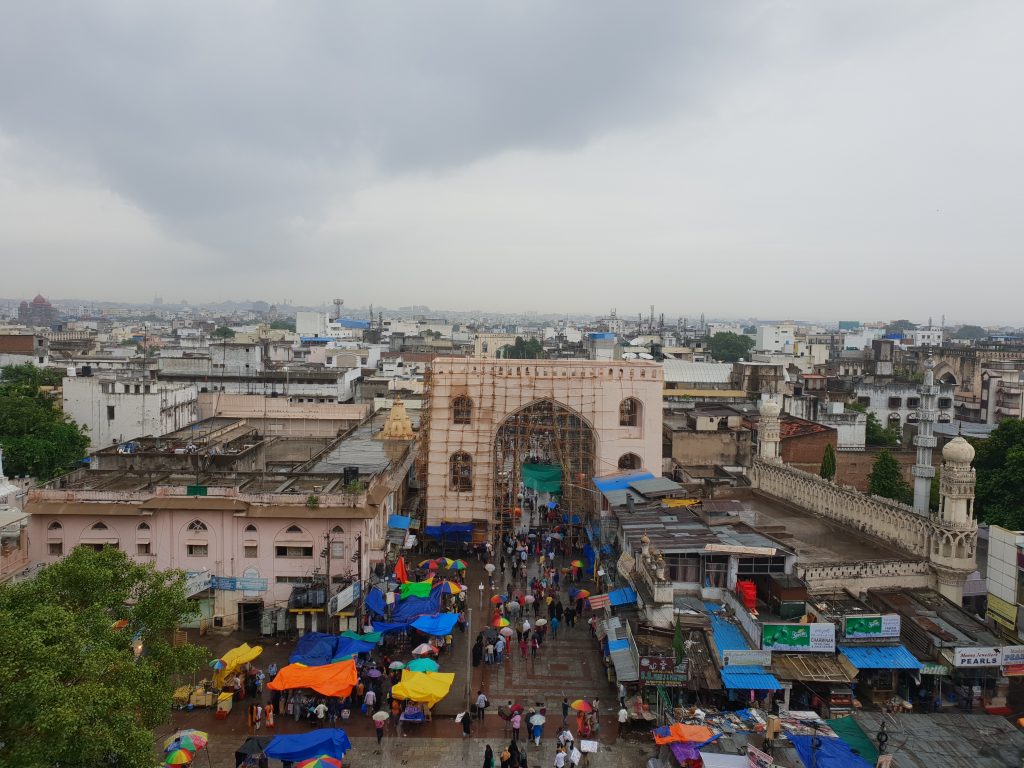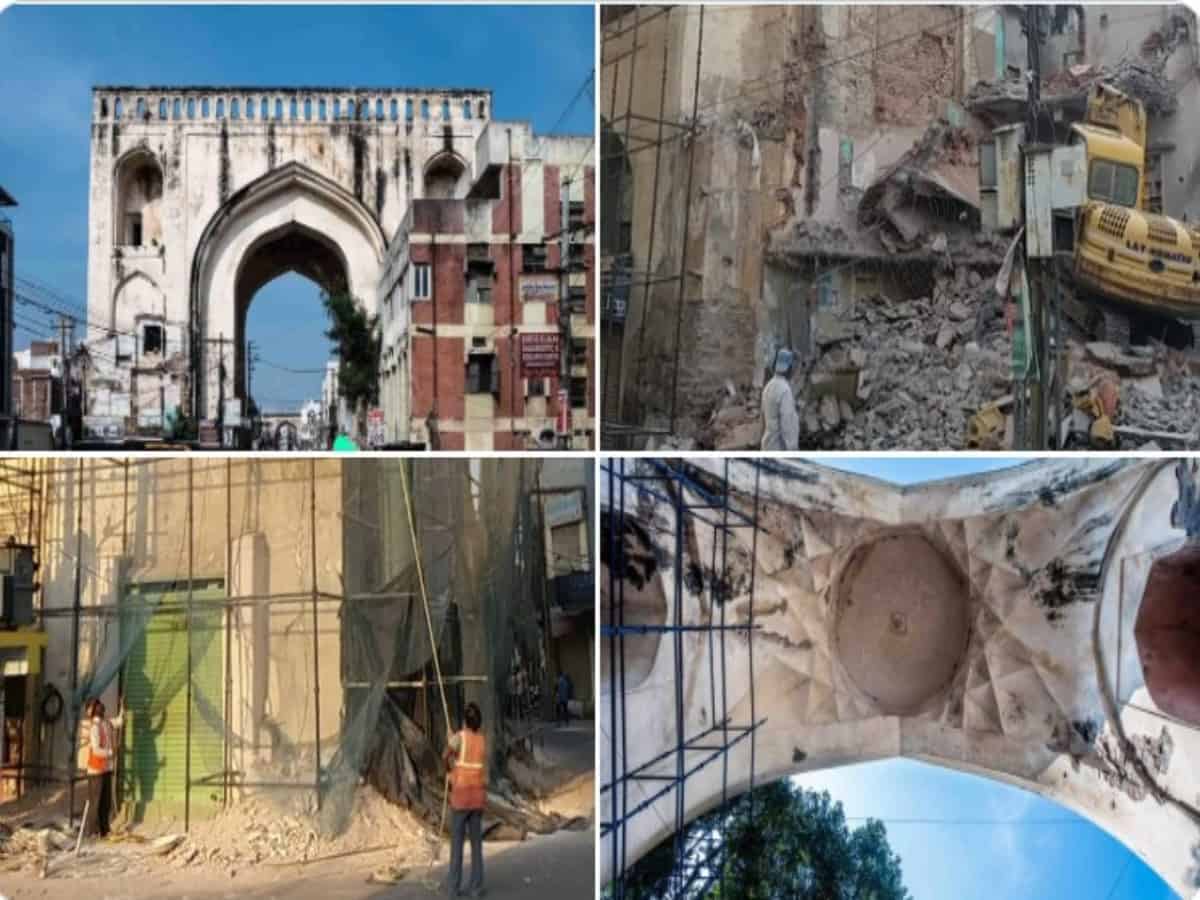Hyderabad: The Greater Hyderabad Municipal Corporation (GHMC) on Sunday cleared encroachments from the historic Qutb Shahi-era Kali Kaman, which is one of the four Kamans (or arched entrance ways) built originally after Hyderabad was founded in 1591.
“Encroachment being removed from the Kali Kaman, one of the 4 char kamans around #Charminar & restoration work in progress by @GHMCOnline,” tweeted state Secretary (Municipal Administration and Urban Development) Arvind Kumar, along with pictures of the encroachment removal. The other four Kamans that exist near the Charminar are the Sihr-e-Batil (now known as Mitti ka Sher), Charminar and Machli Kaman.
The Kali Kaman and the Char Kaman (4 arches) are some of the earliest monuments built which served as the entrances to the new city of Hyderabad (founded in 1591), that had been shifted out of the Golconda fort, which before Hyderabad used to be a walled city, and capital of the Golconda kingdom.
As one approaches the the Charminar (from Madina junction), the first Kaman that comes is the northern ‘Machli Kaman’ (which apparently gets its name as a big fish made of bamboo and paper used to be suspended in the centre of the arch every lunar new year), and the southern Charmnar Kaman (in picture).
But most people generally miss noticing the eastern Kali Kaman and the western Sihr-e-Batil (now known as Mitti ka Sher). All of the 4 arches had a purpose, and were built as a piazza by Mohammed Quli Qutb Shah, the founder of Hyderabad, and grandson of Sultan Quli, the founder of the Golconda kingdom.

The Charminar is Hyderabad’s foundational building, and the Char Kaman, along with the Badshahi Ashurkhana and Jama Masjid (diagonally opposite the Charminar), were built soon after. In fact, the original Qutb Shahi palaces were situated towards the western Sihr-e-Batil Kaman (translates to arch of lion hearted or magic breaker), which today don’t exist as the city was almost razed to the ground by Mughal emperor Aurangzed when he conquered the Golconda kingdom in 1687.
According to the historian Syed Ali Asgar Bilgrami’s book Landmarks of the Deccan, four highways led to different parts of the city through every arch (Hyderabad was built with Charminar as its centre) and exactly in the centre of the four arches was the reservoir called Char-su-ka-Houz, which is now defunct and is called Gulzar Houz
The Qutb Shahis or Golconda kings were Hyderabad’s Persian Shia Muslim founders, and the kingdom was founded by Sultan Quli, who hailed from Hamadan, which is in present day Iran.

